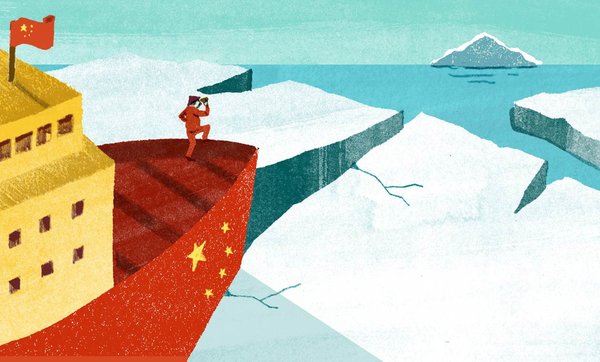
From Einar Benediktsson and Thomas R. Pickering, New York Times: According to a 2008 estimate by the U.S. Geological Survey, 13 percent of all the unexploited oil, 30 percent of natural gas and 20 percent of the natural gas liquid resources are located under the seabed of the Arctic. Iceland is an ideal location to base ocean research, drilling and support for extraction and transport. The shrinking polar ice also introduces a revolutionary change in ocean transport between Asia and Europe — the Northeast Polar Passage would reduce transport costs by as much as 40 percent as compared with the traditional route via the Suez Canal.
Once again, Iceland has become a strategic gateway, and among the nations that are showing a growing interest in the country is China. The time has come for the United States to strengthen its relationship with Iceland. . . .
Though Iceland is not regarded as a coastal state in the North Polar region, it lies in the Arctic and has recognized exploitation rights on the potentially mineral-rich coastal shelf of the Jan Mayen Island under a 1981 bilateral agreement with Norway.
Although China has not stated an official policy on the Arctic, it is not likely to support the unilateral decisions of the Arctic Council. The polar sea route is of major importance to the world’s leader in manufacturing. And China has made a major effort in recent years to acquire access to mineral and energy resources in many parts of the world. Chinese public institutes and scholars have maintained that Arctic maritime routes and seabed riches should be for the use of all mankind.
China has also begun to court Iceland to help get access to the Arctic Council. Last year, Iceland was the first stop on an official European tour by Prime Minister Wen Jiabao and a large Chinese delegation. And when the Chinese icebreaker Xuelong paid a call on Iceland, the crew was received by President Olafur Ragnar Grimsson at his residence. The colossus China and tiny Iceland, half a world apart, are now discussing a bilateral free-trade agreement.
A Chinese proposal to build a “tourist paradise” at a vast, isolated site in northern Iceland could also be used as a facility for workers building and serving ports for trade and Arctic exploration. This undertaking in northeastern Iceland could also be integrated in China’s recently announced interest in a multibillion-dollar project to develop iron mines north of Nuuk in Greenland.
In short, China is reaching out for a position in the Arctic, beginning in Greenland, followed by support facilities in Iceland — which is not a member of the European Union and seemingly has been put out in the cold by the United States — with potential use for naval vessels patrolling the Arctic and the Northeast Polar Passage.
Einar Benediktsson is a former Iceland ambassador to the United States, NATO and the European Union. Thomas R. Pickering is a former U.S. under secretary of state for political affairs and ambassador to Russia and the United Nations. (graphic: Daniel Haskett/New York Times)
Image: nyt%203%2012%2013%20China%20Iceland.jpg
